Italian (crystal), English or Continental mount, 19th century.
Rock crystal, enamel, sapphires, diamonds, gold
Dimensions: 8.2 × 7.5 cm
Weight: 65 grams
Mark: French owl import duty mark (post-1893)
A magnificent and richly ornamented pendant, comprising a large oval plaque of finely carved rock crystal mounted within an elaborate openwork frame. The carving presents a dramatic mythological scene of The Triumph of Neptune, with the Roman sea god depicted holding a trident and standing authoritatively upon rocky terrain. He confronts a youthful sea deity—possibly a Triton—riding a hippocamp as waves crest beneath him. The scene, animated with movement and classical symbolism, reflects the enduring popularity of Greco-Roman marine iconography throughout the Renaissance and into the 19th century.
The frame is adorned with white enamelled scrolls, interspersed with sapphires and old-cut diamonds in closed settings. Two mount variants survive: one in blue and white enamel with a diamond-accented border, the reverse in chased and pierced gold with a more restrained decorative scheme. The rock crystal plaque is likely of Italian origin, 19th century or earlier, and the mount—possibly English—is a fine example of neoclassical or historicist revival jewellery, likely produced in the mid-to-late 19th century as a cabinet jewel rather than a wearable pendant.
An exceptional tour de force of lapidary carving and goldsmith’s art, this pendant was conceived less for wear than for display, likely within a connoisseur’s treasury or Kunstkammer.


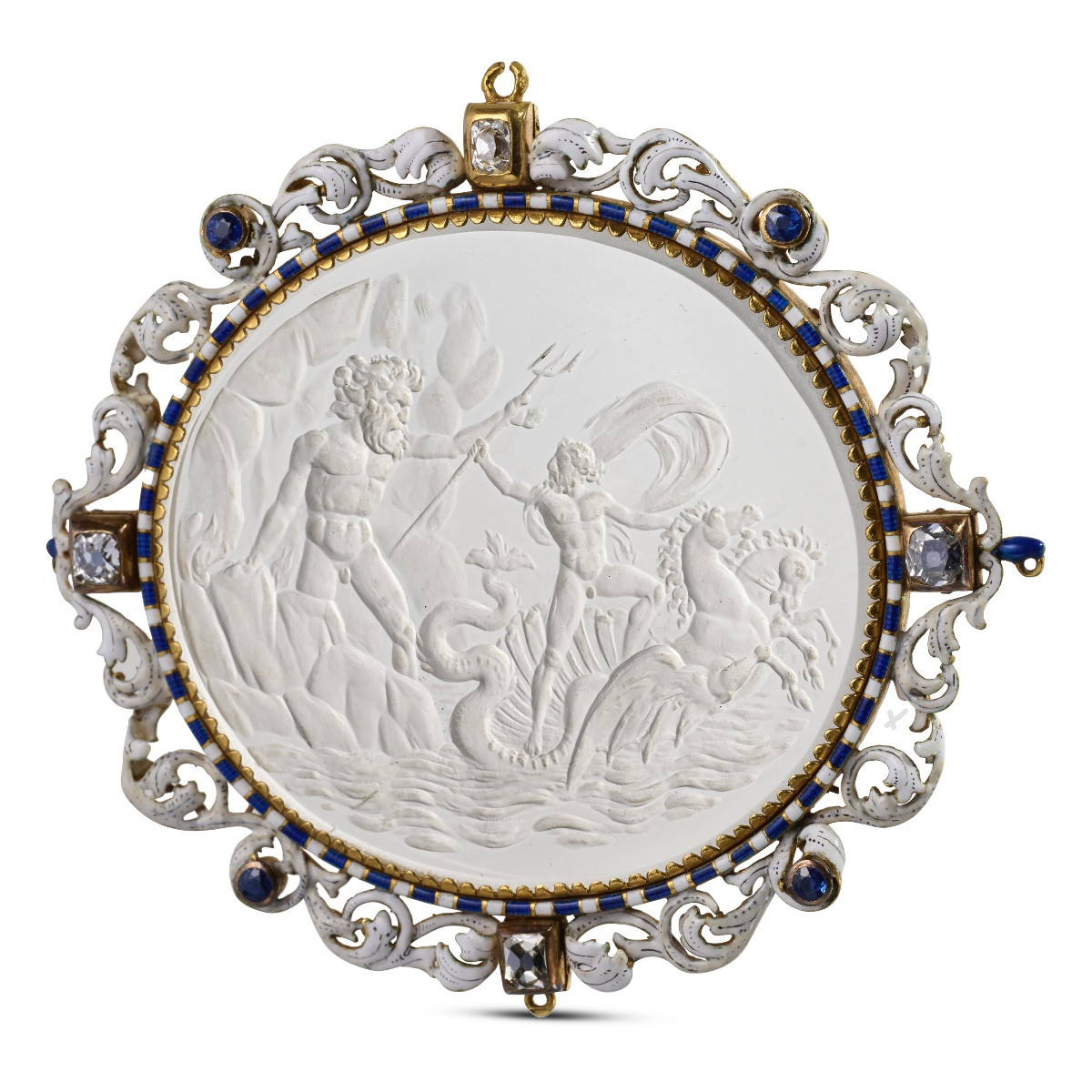
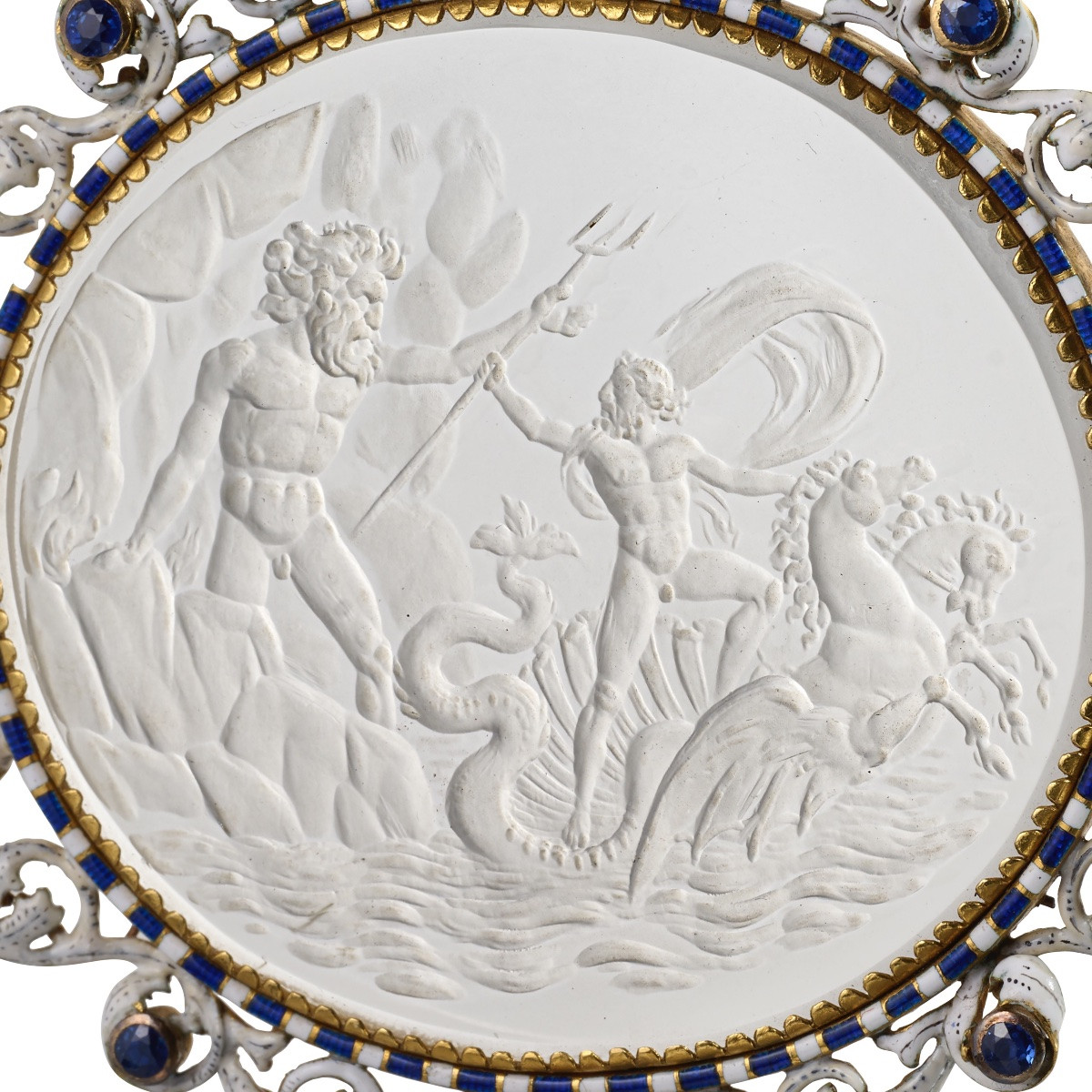
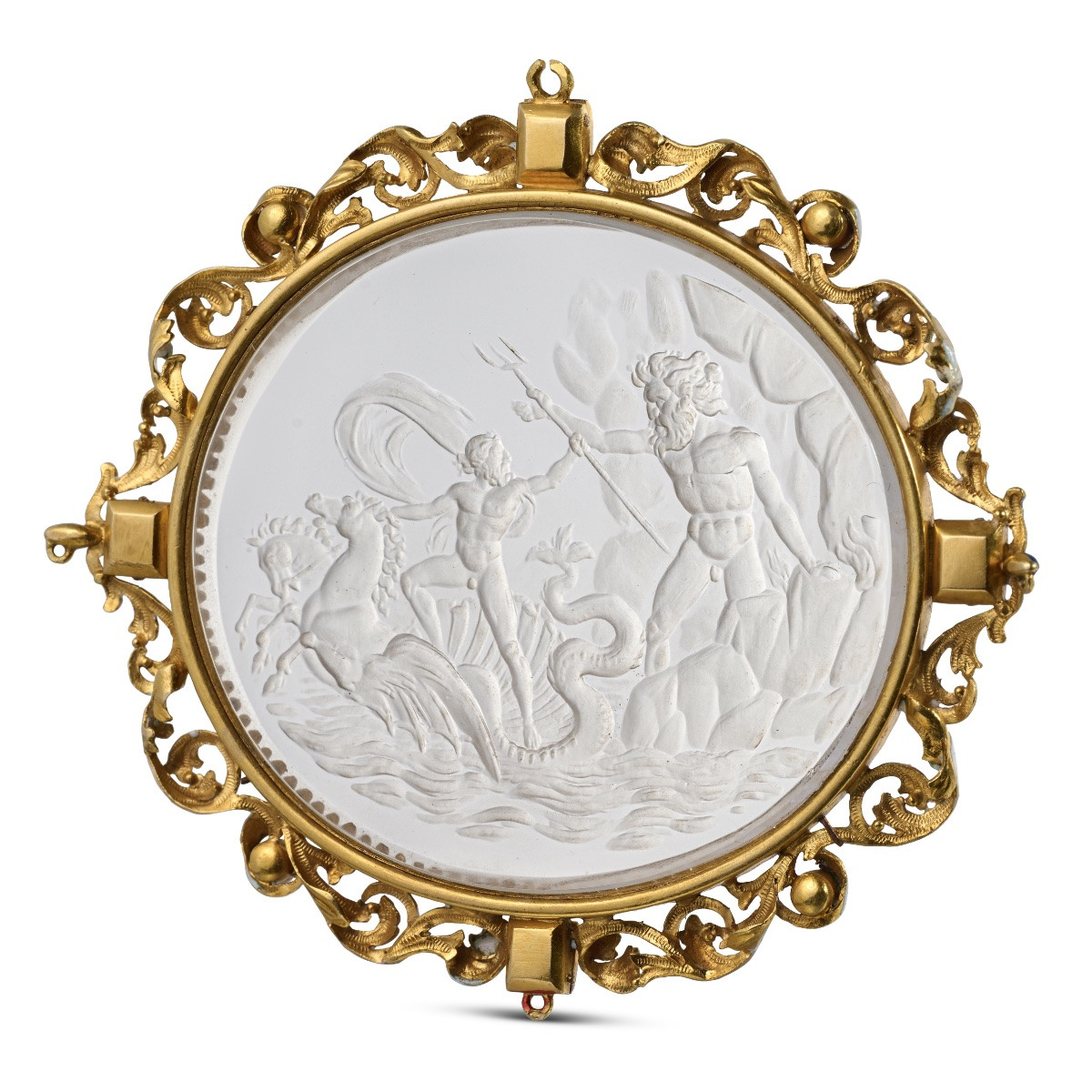
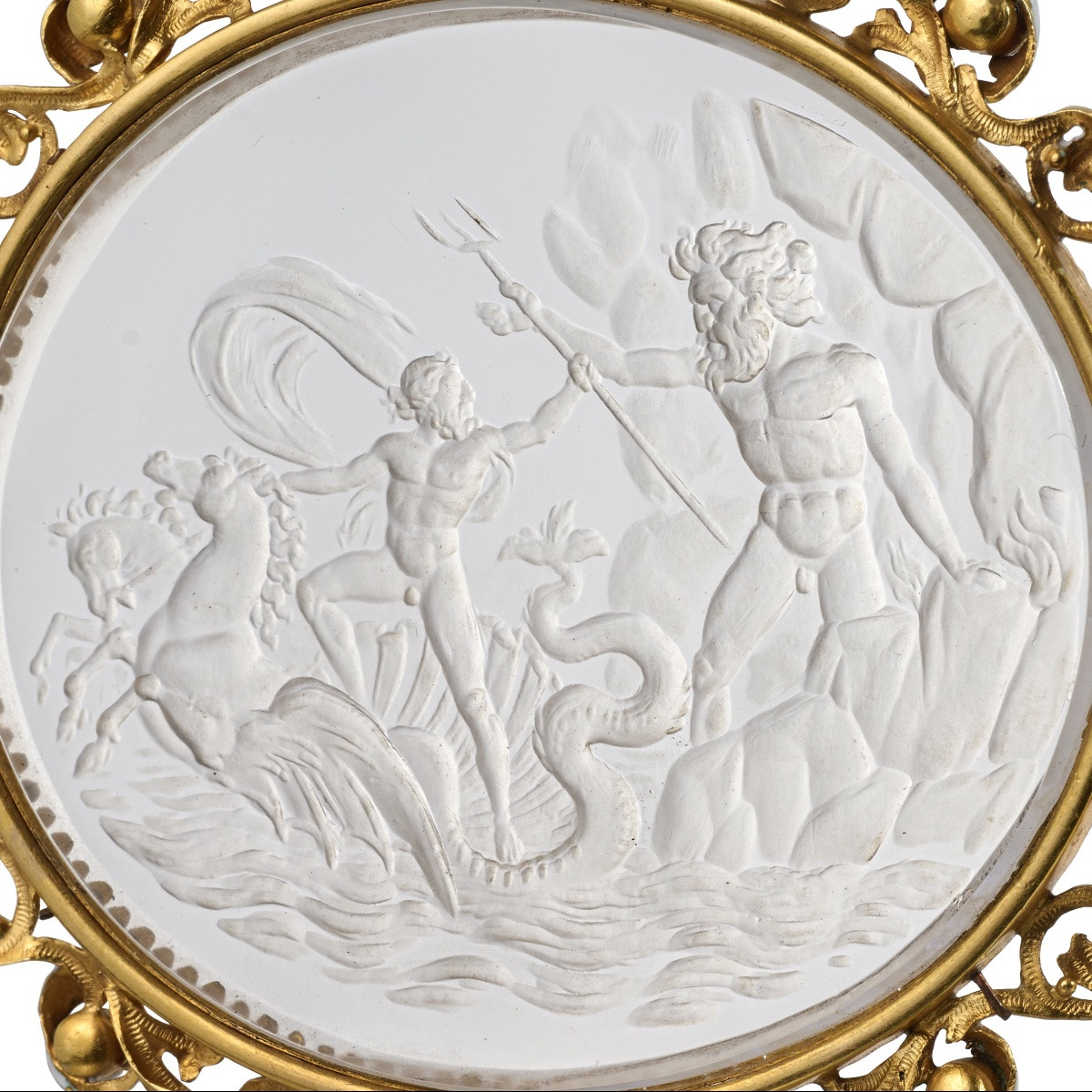
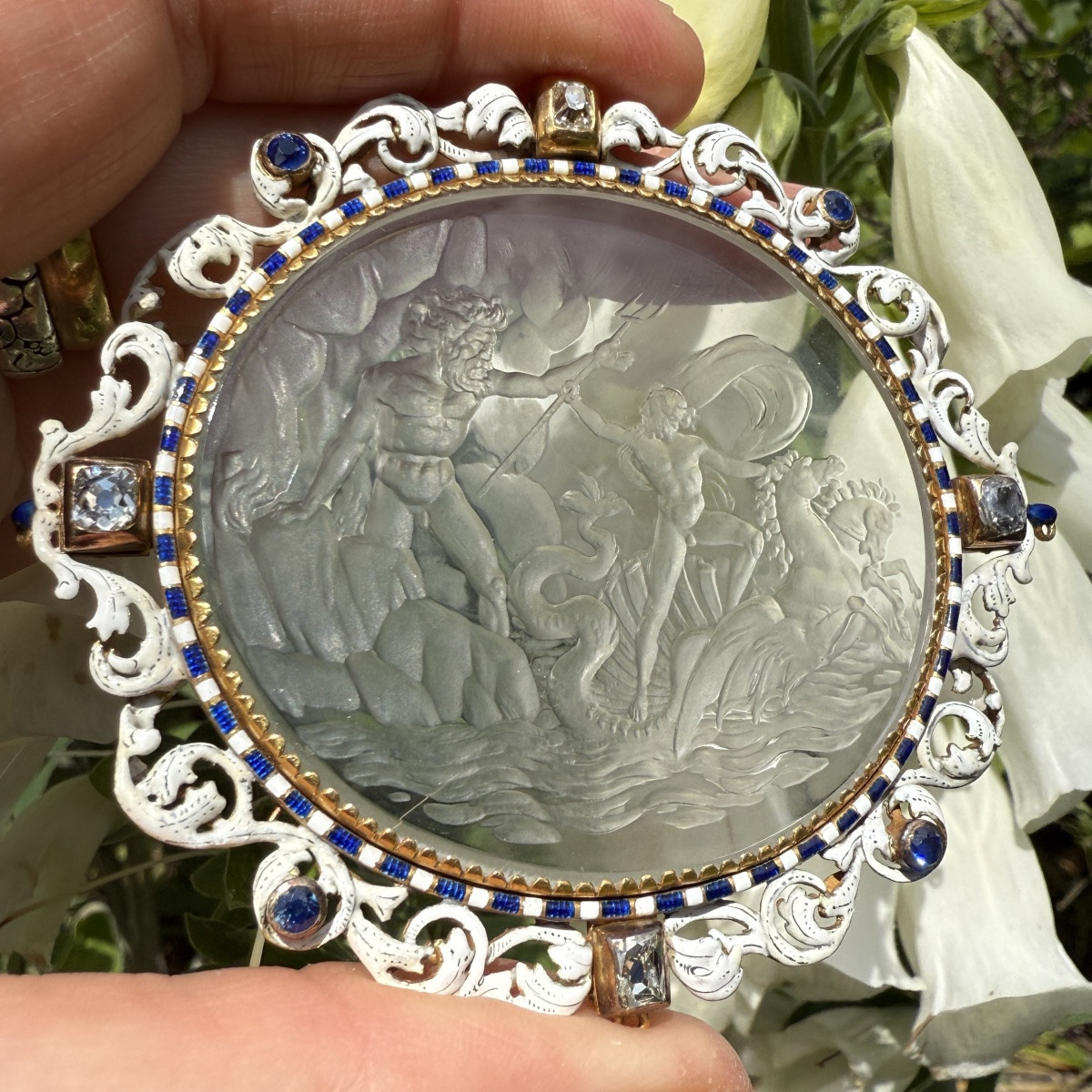
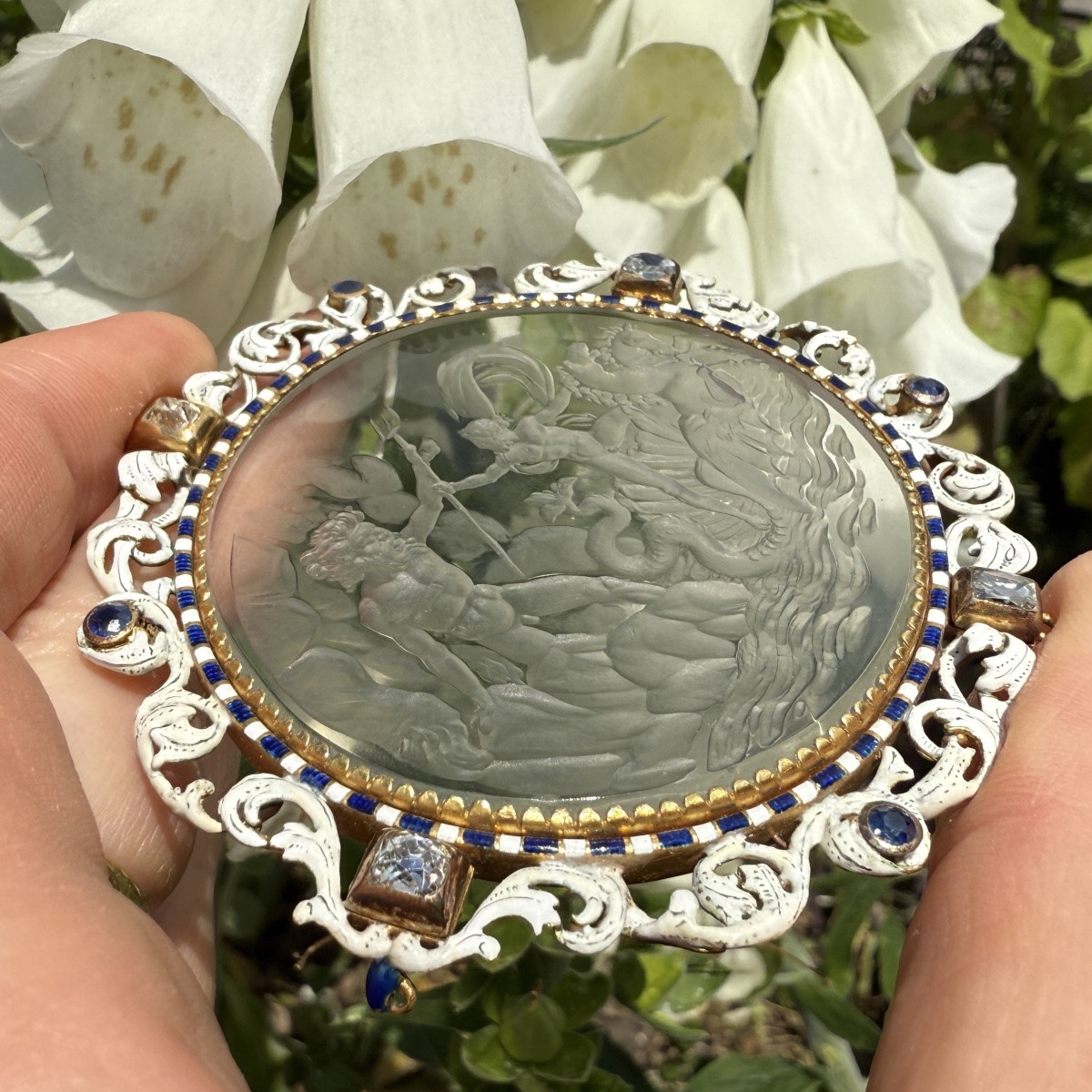






















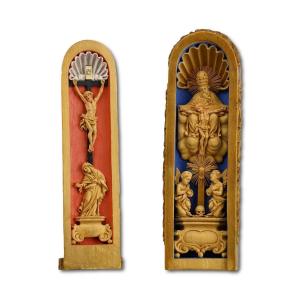


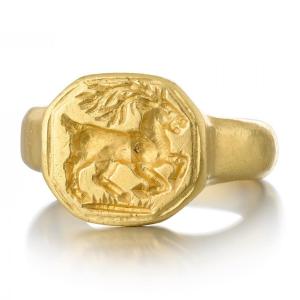

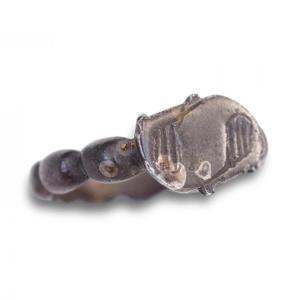

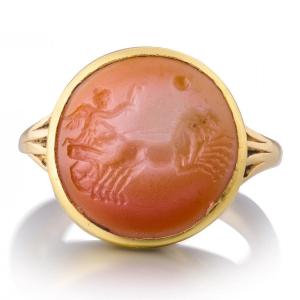
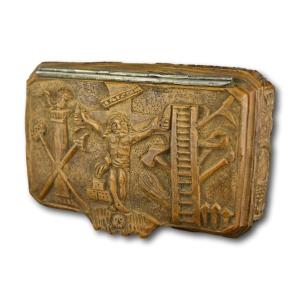
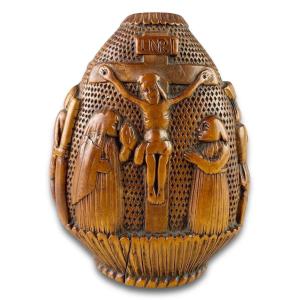


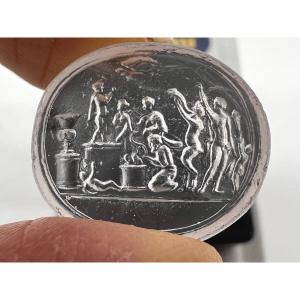


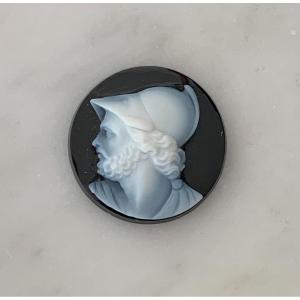
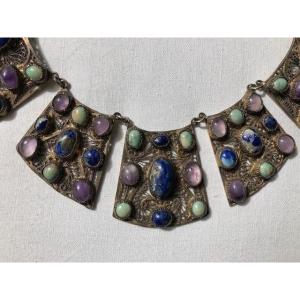



 Le Magazine de PROANTIC
Le Magazine de PROANTIC TRÉSORS Magazine
TRÉSORS Magazine Rivista Artiquariato
Rivista Artiquariato